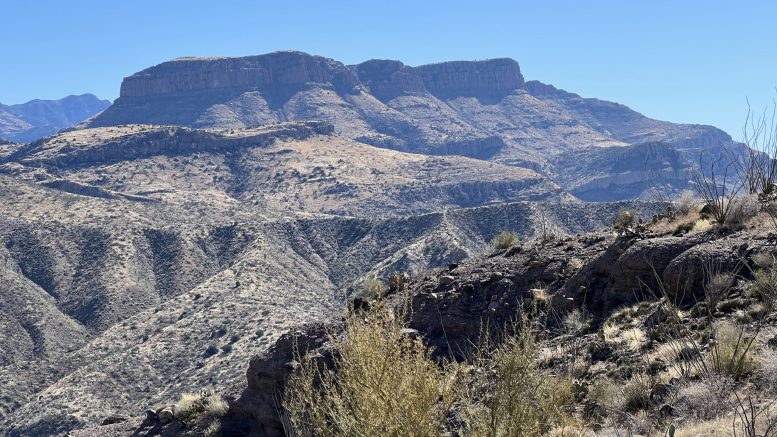Faraday Copper (TSX: FDY; US-OTC: CPPKF) is reporting wide intercepts of copper mineralization outside of the updated resource it completed in early May for its flagship Copper Creek project in southern Arizona.
The company intersected 484.8 metres of 0.42% copper, 0.03 gram gold per tonne and 2.77 grams silver per tonne from 660.8 metres in hole FCD-23-024 drilled into the Keel zone at the project, about 70 km northeast of Tucson.
The broader intercept included 103.3 metres grading 0.79% copper, 0.04 gram gold and 4.7 grams silver starting from 924.5 metres downhole, and 32.3 metres of 0.98% copper, 0.02 gram gold and 8.9 grams silver starting from 1,105.2 metres downhole.
A preliminary economic assessment (PEA) for Copper Creek, released on May 3 envisioned an open pit and underground mine plan over a 32-year period, with open-pit mining for more than nine years and cave production starting in year eight. Open-pit mining would enable a rapid payback on initial capital of US$798 million and would fund development of a bulk underground mine.
The study estimated a 51,500 tonne per year operation and life-of-mine payable production of 3.4 billion lb. copper-equivalent. The mine would produce about 106 million lb. copper, 1.4 million lb. molybdenum and 3.2 million oz. silver a year at production cash costs of US$1.67 per lb. copper and all-in sustaining costs of US$1.87 per lb. copper over the mine life.
The PEA outlined a post-tax net present value (7% discount rate) of US$713 million, and a post-tax internal rate of return of 15.6%. The study used metal prices of US$3.80 per lb. copper, US$13 per lb. molybdenum and US$20 per oz. silver.
Mined cave material would be conveyed 4.8 km to surface by a dedicated conveyor decline that would connect with an overland conveyor and then be transported to the process plant.
The project has a combined open pit and underground resource of 421.9 million measured and indicated tonnes grading 0.45% copper, 0.008% molybdenum, 1.1 grams silver per tonne (0.485 copper-equivalent) for contained metal of 4.2 billion lb. copper, 74.6 million lb. molybdenum, and 15.5 million oz. silver (4.4 billion lb. copper-equivalent).
Combined inferred resources add 83.6 million tonnes averaging 0.34% copper, 0.007 moly and 0.6 gram silver (0.36% copper-equivalent) for 628.2 million lb. copper, 13.4 million lb. molybdenum and 1.7 million oz. silver (669 million lb. copper-equivalent.)
The updated resource estimate was based on more than 200,000 metres of drilling and 83% of it is in the measured and indicated category. The mineral resource remains open laterally and at depth.
Faraday describes the 65-sq.-km project as “one of the largest undeveloped copper projects in North America” and notes that Copper Creek is not far from Freeport-McMoRan’s Miami mine and smelter, 144 km east of Phoenix.
The company started trading on the Toronto Stock Exchange last year. On Wednesday afternoon in Toronto, its shares traded at 71¢ apiece within a 52-week range of 35¢ and $1.18. It has about 175 million common shares outstanding for a market cap of roughly $124.5 million.
Strategic investors own about 33.4% of the company and include the Lundin family, Murray Edwards and Pierre Lassonde.


Be the first to comment on "Faraday reports wide intercept from Copper Creek in Arizona"